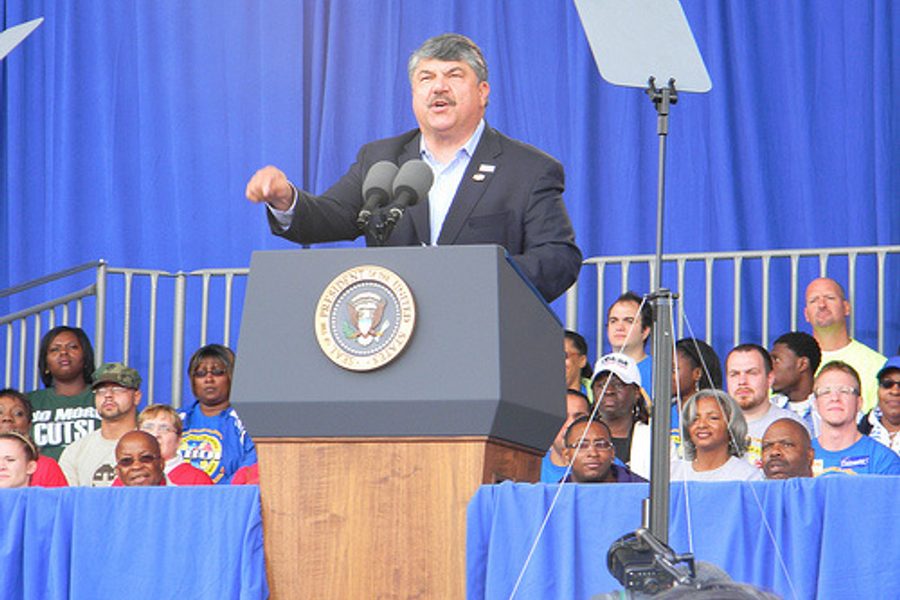
In Tuesday’s “extremely disappointing” elections, AFL-CIO president Richard Trumka says, unions “were a firewall” against greater losses for the Democrats, including retention of’ the Senate.
Indeed, union members once again supported labor-endorsed candidates – overwhelmingly Democrats – by 26 to 28 percentage points on average more than non-union voters (64−36 for House and 62-38 for Senate Democrats). In a few critical races, the union edge was even greater: In Nevada’s close Senate race, union members favored Democratic Senate majority leader Harry Reid by 69 to 29 percent over Tea Party candidate Sharron Angle – arguably providing him his victory, since non-union voters went slightly for Angle.
But the union margin was not as great as in the past two elections, says Guy Molyneux of Hart Research, which polled union members as well as the general electorate in 100 swing Congressional districts. Union members, he says, were susceptible to the same wave of discontent as the general public. (The media exit polls, which identify voters only as from a union household, not as members, showed stronger Republican support in some races than did the Hart poll.)
Union members also vary greatly in their political responses by demographic group. White women overall voted for Republican House candidates by 17 percent, but white union women favored Democrats by 36 percent. White non-college graduates – used by many pollsters as a proxy for white working class voters – favored Republicans by 27 percent, and even union members who had not graduated from college only split their vote 50-50 between the two parties. Even worse, white non-college educated men picked Republicans 67 to 33 percent.
Unions, which spent well over $200 million on this election cycle but were swamped by corporate cash, claim their political mobilization is effective as a result of multiple, issue-oriented educational contacts with members, who trust their unions.
But after many years of observation, I’m still struck by how superficial most of the contacts still are, even though they have improved. Unions will have to give much higher priority to political education if they hope to compensate for loss, or at best slow growth, of membership and to overcome the miseducation of so many non-college white men.
The Hart survey found high dissatisfaction with the economy, and 70 percent of the swing district voters who were very dissatisfied (56 percent of voters) voted Republican. Yet only 35 percent of voters think Republicans have a clear economic plan – close to the 30 percent who think Democrats do.
Most voters knew little about Republican plans, but rejected many of their key ideas by majorities of 62 to 85 percent (for example, 63 percent against tax cuts for earners of $250,000, 62 percent against social security privatization, 75 percent against reducing or eliminating the minimum wage).
Yet by equally lopsided majorities the same voters – a majority of whom cast a ballot for Republicans – supported labor union and Democratic job-creation proposals, such as investing in schools, roads and energy systems, tax credits for new U.S. jobs, and extending unemployment benefits.
“Working people think there wasn’t enough done to help average people, not that there was over-reach,” Trumka said. “They wanted results, and they didn’t see them.” Hart’s survey underscores the point: 43 percent of voters thought Obama helped banks too much, compared to 34 percent who thought Democrats imposed too many regulations.
Despite the unfavorable returns, organized labor will continue to fight for the same agenda as before the election, Trumka said: “Our agenda is jobs, jobs, jobs and more jobs.
David Moberg, a former senior editor of In These Times, was on staff with the magazine from when it began publishing in 1976 until his passing in July 2022. Before joining In These Times, he completed his work for a Ph.D. in anthropology at the University of Chicago and worked for Newsweek. He received fellowships from the John D. and Catherine T. MacArthur Foundation and the Nation Institute for research on the new global economy.








